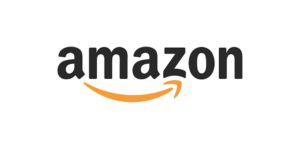#1 Microsoft is well on its way to reaching $50 billion in cloud sales in its current fiscal year. So let’s do a quick overview of the Cloud Wars top 5 vendors, which in this calendar year will generate about $115 billion in cloud revenue.
#1 Microsoft.
With $11.6 billion in commercial-cloud revenue for its first fiscal quarter ended Sept. 30, Microsoft now generates 35% of its total revenue from the cloud. That sets a bar to which other big traditional tech companies can aspire. (They’re all in the range of 20% to 25%.) It also underscores why Satya Nadella’s company is the world’s largest, most-influential and fastest-growing cloud vendor.
Is Microsoft maxing out, or is the best still yet to come? Check out this comment from Nadella from this week’s earnings call. And if you’re a competitor in the Cloud Wars, you’d better be prepared to lace ’em up extra tight:
What’s next for us is that apps and infrastructure go from perhaps first innings to second innings, and for data and AI to start the first inning. When it comes to security and compliance, we never participated in this. But guess what: we get to participate in a fairly competitive way now.
We’ve built something that didn’t even exist a few years ago, which is the workflow cloud—that’s a huge opportunity for us. In business apps, we’re very competitive and growing our footprint. Even when you think about something like Microsoft 365, in spite of our past success with all the first-line work, we never participated in that—but now we get to participate in it. So I see long-term secular growth opportunities and we’ll stay focused on making sure our innovation is competitive in all those layers.
#2 Amazon.
Andy Jassy’s company continues to do stellar work in all respects. And in a parallel universe in which Microsoft doesn’t exist, no doubt Amazon would be #1. But back here on planet Earth, Microsoft does indeed exist. Its cloud revenue is about 25% bigger than AWS’s. And Microsoft’s cloud business is growing faster than Amazon’s. And Microsoft has a broader product footprint.
As I see it, the biggest difference-maker for AWS will be the capability of its database business to handle big mission-critical workloads from global corporations. AWS has done a very nice job of delivering purpose-built databases for departments or specific tasks. But if AWS really wants to take on Oracle in the cloud database business, then it must show that big corporate customers are willing to rip out their Oracle databases and replace them with AWS databases. Amazon itself did just that. But eating your own dog food is an entirely different thing from asking your guests to eat that same dog food. This is the nut AWS must crack if it hopes to ever make a serious run at #1 Microsoft—and if it hopes, over the next few years, to hold off hard-charging and immensely capable #6 Google.
#3 Salesforce.
It’s been fascinating to watch Marc Benioff push his company outside of its traditional CRM space in recent months. The Manufacturing Cloud gives Salesforce a bit of an entre into the world of ERP, and its recent launch of an order-entry application nudges that door open a bit more. And several months ago Benioff pushed into the employee-experience space. On top of those moves—clearly aimed at countering SAP’s insurgency into the CRM space with Qualtrics plus SAP’s CX suite—Benioff is seeing the need for Salesforce to become more of a player in the platform space. Businesses will need to extend and expand his core applications to meet the ever-increasing requirements of their own customers.
Salesforce’s SaaS business is still twice as large as that of #4 SAP or #5 Oracle—but theirs are growing significantly faster than Salesforce’s. We’ll be keeping a close eye on that.
#4 SAP.
As a new era of product strategy and capability takes hold, a new generation of leadership steps in. With former long-time CEO Bill McDermott heading to ServiceNow (#10 on the Cloud Wars Top 10), newly named co-CEOs Jennifer Morgan and Christian Klein will lead the company into a new world. Their primary focus is on what SAP calls “the intelligent enterprise” and “the experience economy.”
In SAP’s recent earnings call, Morgan made it unmistakably clear that Qualtrics and the Experience Economy will become the core of SAP’s business, in close combination with its unmatched and extremely valuable cohort of global ERP customers. Building on McDermott’s legacy, Morgan and Klein bring great energy, intelligence and customer-centric thinking to this new era for SAP. The key will be whether customers buy into the Qualtrics-plus-ERP vision as fervently as Morgan and Klein do.
#5 Oracle.
Boy oh boyzee, talk about unbridled ambition! Into his early 70’s and having led Oracle for 40 years, Larry Ellison says he will overtake SAP as the world’s #1 supplier of enterprise applications (combining revenue from cloud and on-premises). He also says he’s beating Workday in the HCM space, says his cloud ERP business has market share of more than 90%, says his Autonomous Database is unlike anything any other database vendor can offer (that seems to be true), and says his second-generation IaaS is better any other vendor’s IaaS offerings. (He makes that last point despite the fact that Oracle’s IaaS market share is miniscule.)
But there’s a lot of fire behind Ellison’s smoke. And the tech industry’s past is replete with the carcasses of companies and executives who’ve failed to take Ellison’s earlier proclamations seriously. As I see it, he’s got two things that almost every company wants and needs. First, the cloud-native Autonomous Database (and remember, to get that, you have to run it on Oracle IaaS!). Second, a very modern Cloud ERP suite. Those two products alone would make Oracle a force for years to come—and to complement those two, Ellison also has perhaps the world’s largest fleet of cloud services and technologies.
On the Horizon: #6 Google.
Led by CEO Thomas Kurian, Google Cloud will put tremendous competitive pressure on each of the Top 5. I’ve said before that if any cloud vendor can overtake Microsoft, my money would be on #6 Google. So while each of the Top 5 have tremendous commitments to innovation, customer success and market leadership, those efforts will no doubt be intensified by the sight of Google in their rear-view mirrors.
And bear in mind the warning sign on all rear-view mirrors: “Objects in mirror are larger than they appear.”
Cloud Wars
Top 10 Rankings — Oct. 21, 2019
| 1. Microsoft — Q1 cloud revenue will top SFDC, SAP, Oracle & Google *combined* |
| 2. Amazon — AWS Q2 revenue jumps 37% to $8.38B, cites broad innovation in ML |
| 3. Salesforce —Is Benioff planning to switch more databases from Oracle to AWS? |
| 4. SAP — Rides Microsoft deal to first $2-billion cloud quarter |
| 5. Oracle — Ellison: Autonomous DB growth “so extraordinary, we’re not forecasting” |
| 6. Google — Q2 cloud rev. tops $2B; Kurian’s customer focus leads jump from #7 to #6 |
| 7. IBM — Q3 cloud rev. up 14% to $5B; Red Hat triggers sweeping internal changes |
| 8. Workday — CEO Aneel Bhusri says Oracle, SAP can’t match it in Fortune 100 mkt. |
| 9. Accenture — Up from #10 on ties w/ MSFT AWS GOOG; $9B cloud biz up 23% in ‘18 |
| 10. ServiceNow — Donahoe looks to Microsoft & mobile to drive next growth wave |
Disclosure: at the time of this writing, Microsoft, SAP, Oracle and Google Cloud are clients of Evans Strategic Communications LLC and/or Cloud Wars Media LLC.
Subscribe to the Cloud Wars Newsletter for in-depth analysis of the major cloud vendors from the perspective of business customers. It’s free, it’s exclusive, and it’s great!









